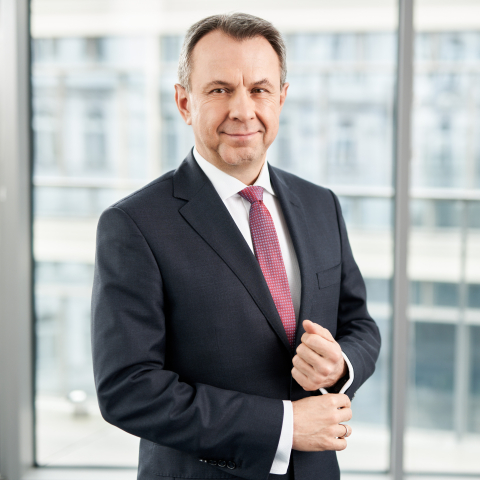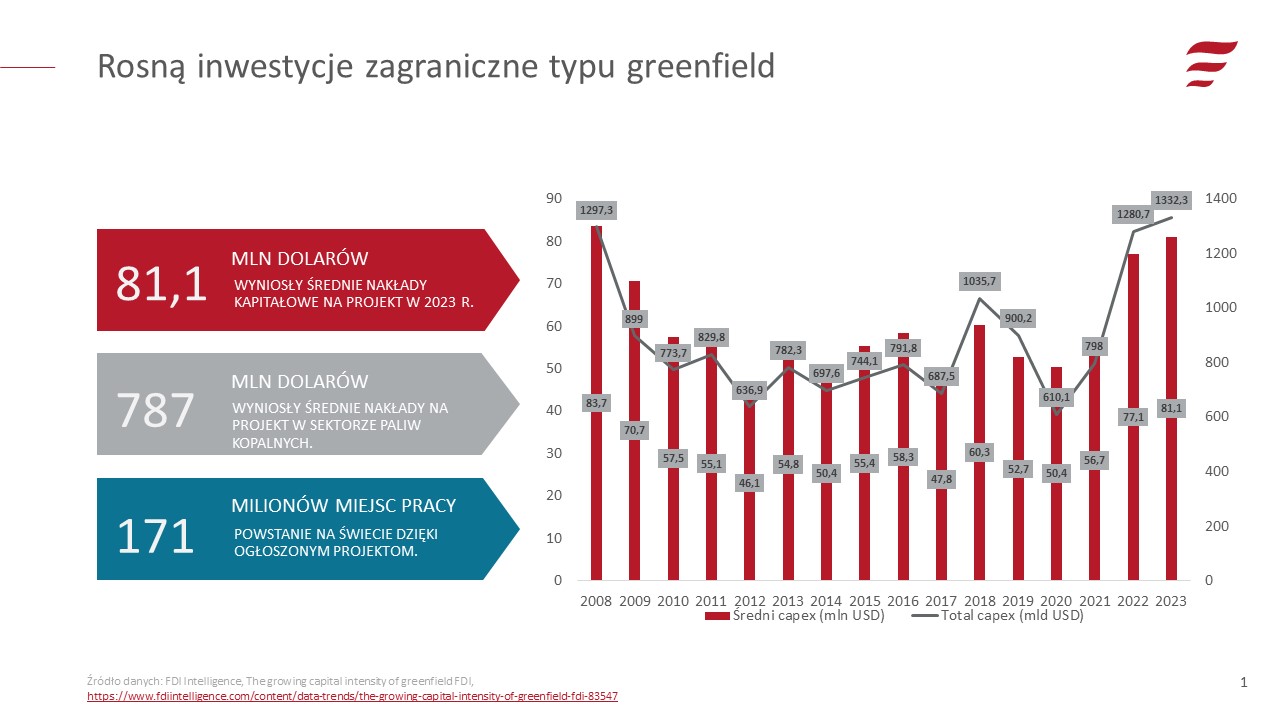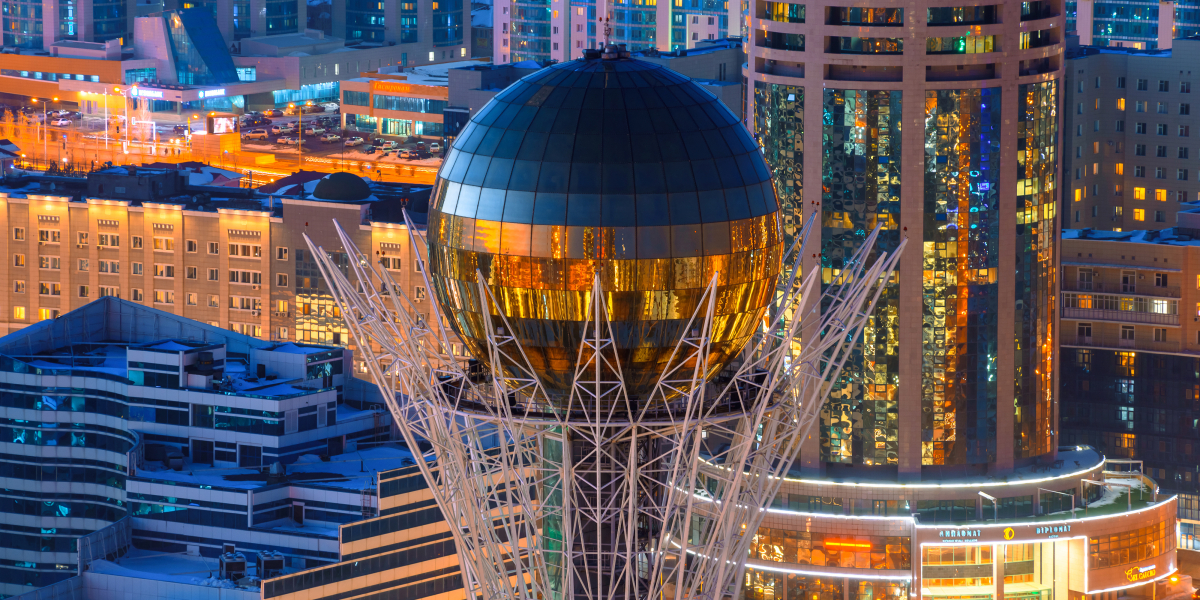Greenfield foreign investment outlays on the rise


Last year, capital expenditure on greenfield foreign investment reached its highest level since the financial crisis 16 years ago. The average capital expenditure per project was USD 81.1 million in 2023 compared to USD 77.1 million a year earlier. In comparison, the historical record was recorded in 2008, at USD 83.7 million per project, according to FDI Intelligence.
Greenfield investment spending is on the rise, driven mainly by mega-projects announced in strategic sectors such as resource extraction and manufacturing, including in particular battery and semiconductor production, as well as renewable energy. It can be seen that the ongoing energy transition and the digitalisation of the global economy are increasing the demand for large, capital-intensive projects. This is important, as megaprojects have a major impact on economic development throughout the value chain.
Total greenfield foreign investment is also at a historically high level, with USD 1,332.3 billion in 2023. Looking at the data since the early 2000s, there has been an increase in greenfield investment spending in foreign projects over the two decades. In 2003, total spending was USD 771.15 billion (the lowest figure was in 2005, when investors spent USD 634.6 billion on greenfield projects. The growing importance of greenfield foreign investment is an important indicator of the dynamism and flexibility of the global economy. In recent years, there has been an increased interest from companies in greenfield investments, which offer a range of benefits to the local and global economy. Greenfield projects generate new jobs, technology transfer, stimulate economic growth and foster innovation.
Although greenfield investments can be more complex and time-consuming than acquisitions in many respects, many companies find them an attractive option because of the ability to tailor the size and structure of the investment to the company's needs, as well as to accommodate its technical or economic requirements. With full control over the investment process, companies can effectively adapt their business strategy to local conditions, which fosters lasting relationships with the target market. The increase in greenfield investment indicates companies' growing confidence in the global business environment and increased opportunities to expand into new and promising markets.
Naturally, greenfield foreign investment usually requires significant initial outlays, as it involves setting up a new business from scratch in a foreign country. The higher capital requirements are due to a variety of factors, such as the cost of acquiring land, building infrastructure and facilities, training employees, and purchasing and maintaining the expensive, state-of-the-art machinery required for production processes.
The average cost of a greenfield project in the mining sector was estimated at USD 787 million, down from the record USD 1.7 billion recorded in 2022. The high cost of investment in this sector is largely due to the significant financial outlays for equipment and infrastructure. In addition, many sites are in remote, undeveloped areas, so investments in new businesses are often accompanied by the development of infrastructure, including roads, bridges, pipelines or facilities to transport and process extracted resources.
In the manufacturing sector, the average investment per project was USD 238 million, which is also the second highest on record (only 2022 saw a higher figure of USD 268 million).
In the list of the 10 projects with the highest declared capital expenditure, as many as four were related to battery production (investments by Volkswagen and Northvolt in Canada, Tata in the UK and Prologium in France). The combined estimated value of these four projects is USD 20.8 billion. In contrast, the number one project in terms of value was that of Taiwanese company TSMC, involving the construction of a semiconductor factory in Dresden. Its cost is estimated at USD 10.74 billion. Another project on the list was Intel's investment in the construction of a semiconductor assembly and testing facility near Wrocław, expected to cost USD 4.6 billion.
Speaking of the most capital-intensive projects, mention should also be made of Norwegian company Equinor's investment in the development of an offshore gas field in Brazil. The investor, together with its partners, is expected to invest around USD 9 billion in this venture.
Rounding out the ranking of the top ten costliest greenfield projects are BP's offshore wind investments in Germany (USD 7.3 billion), Amazon’s investment in Malaysia (USD 6 billion) and the project by an Australian mining company BHP in Canada (USD 4.9 billion).
While the eyes of investors and FDI market analysts are on strategic sectors, many other industries have also seen an increase in investment in announced greenfield projects. The pharmaceutical sector recorded its highest-ever result, with an average capital expenditure of USD 61.9 million per project. Other notable sectors with particularly high FDI capital intensity in 2023 include chemicals (USD 143 million), telecommunications (USD 126 million), ceramics and glass (USD 106 million), building materials (USD 99.6 million) and rubber (USD 95.9 million).
Preliminary figures for the first month of 2024 indicate that average investment spending is likely to remain high this year as well.





